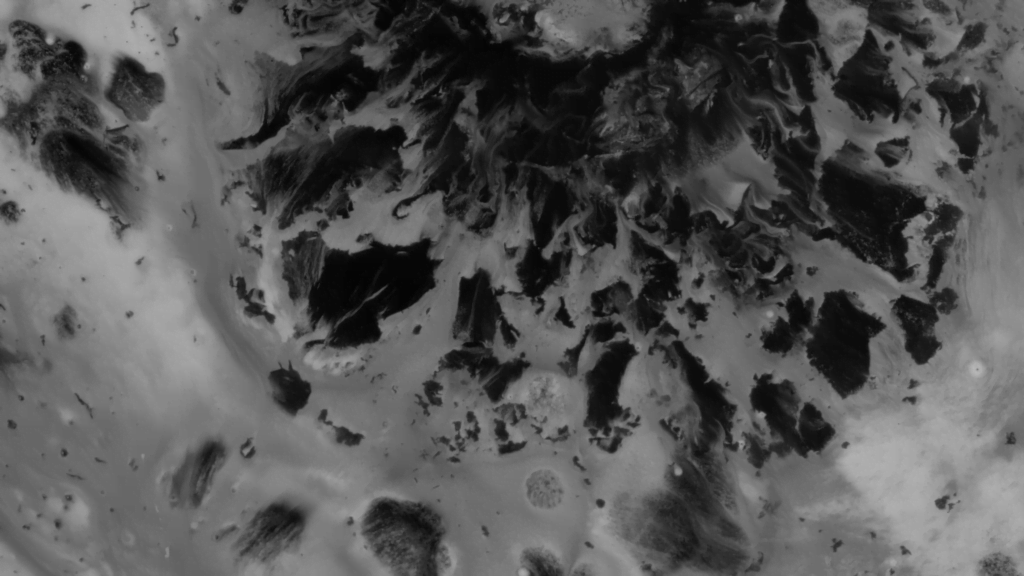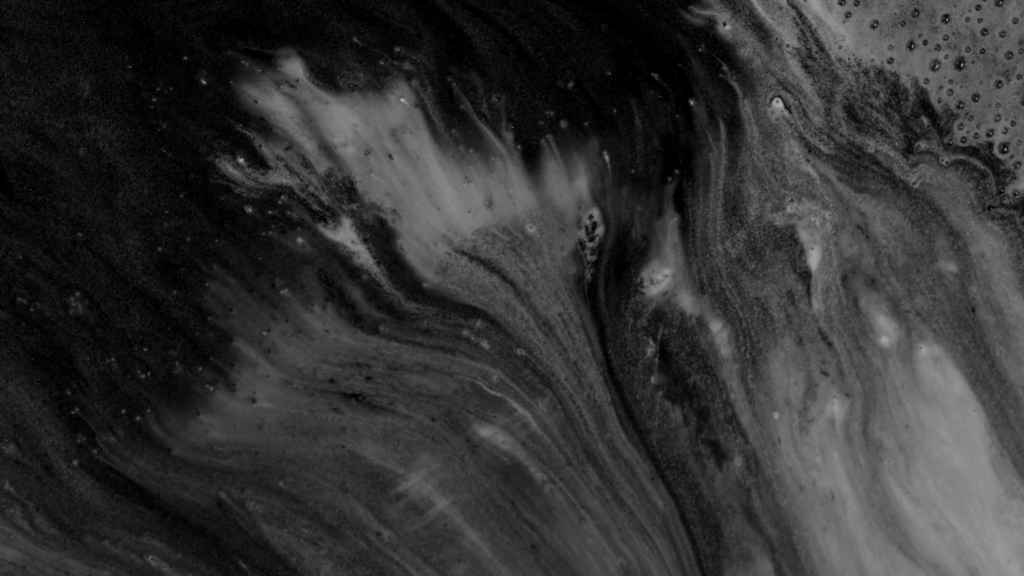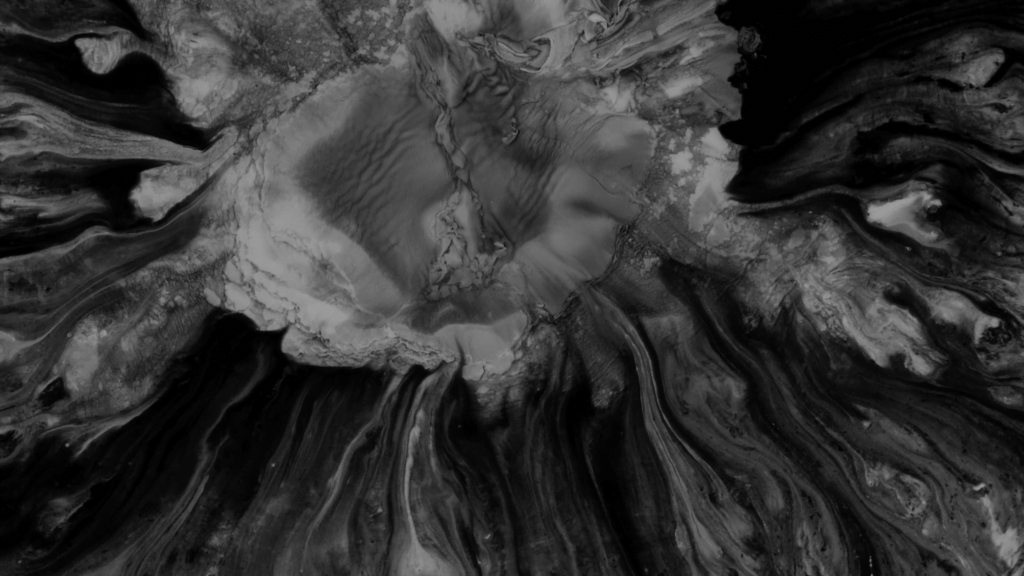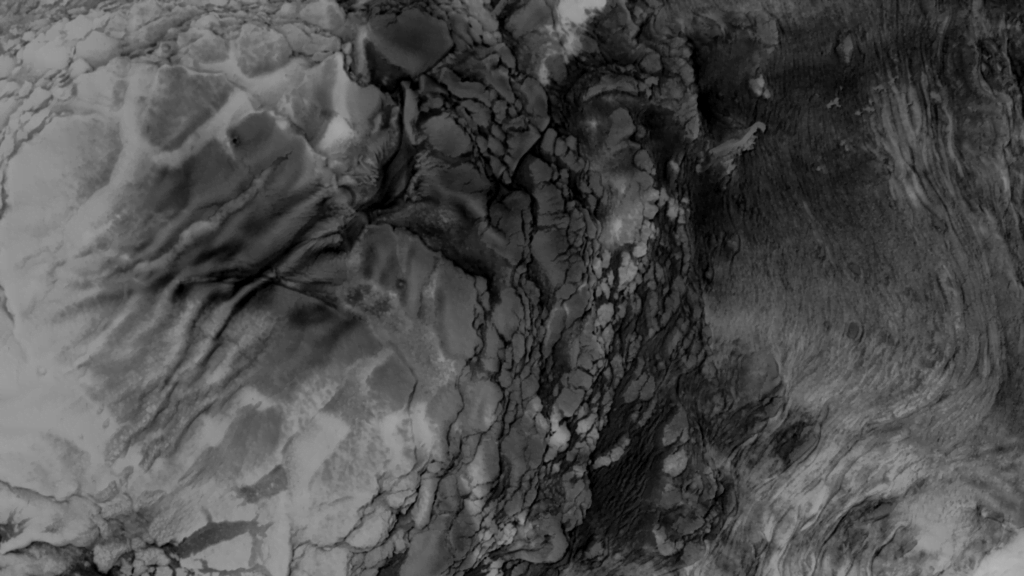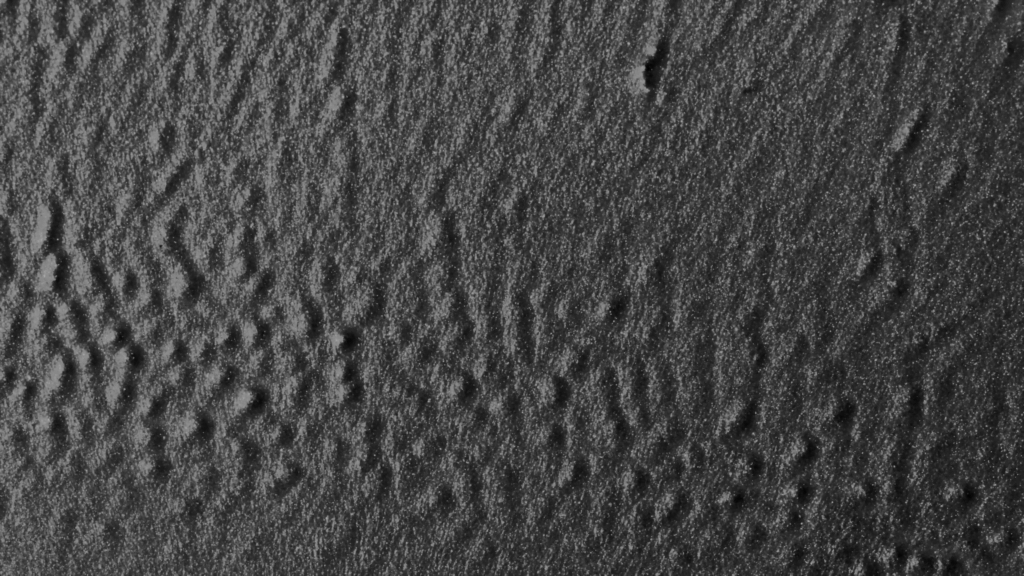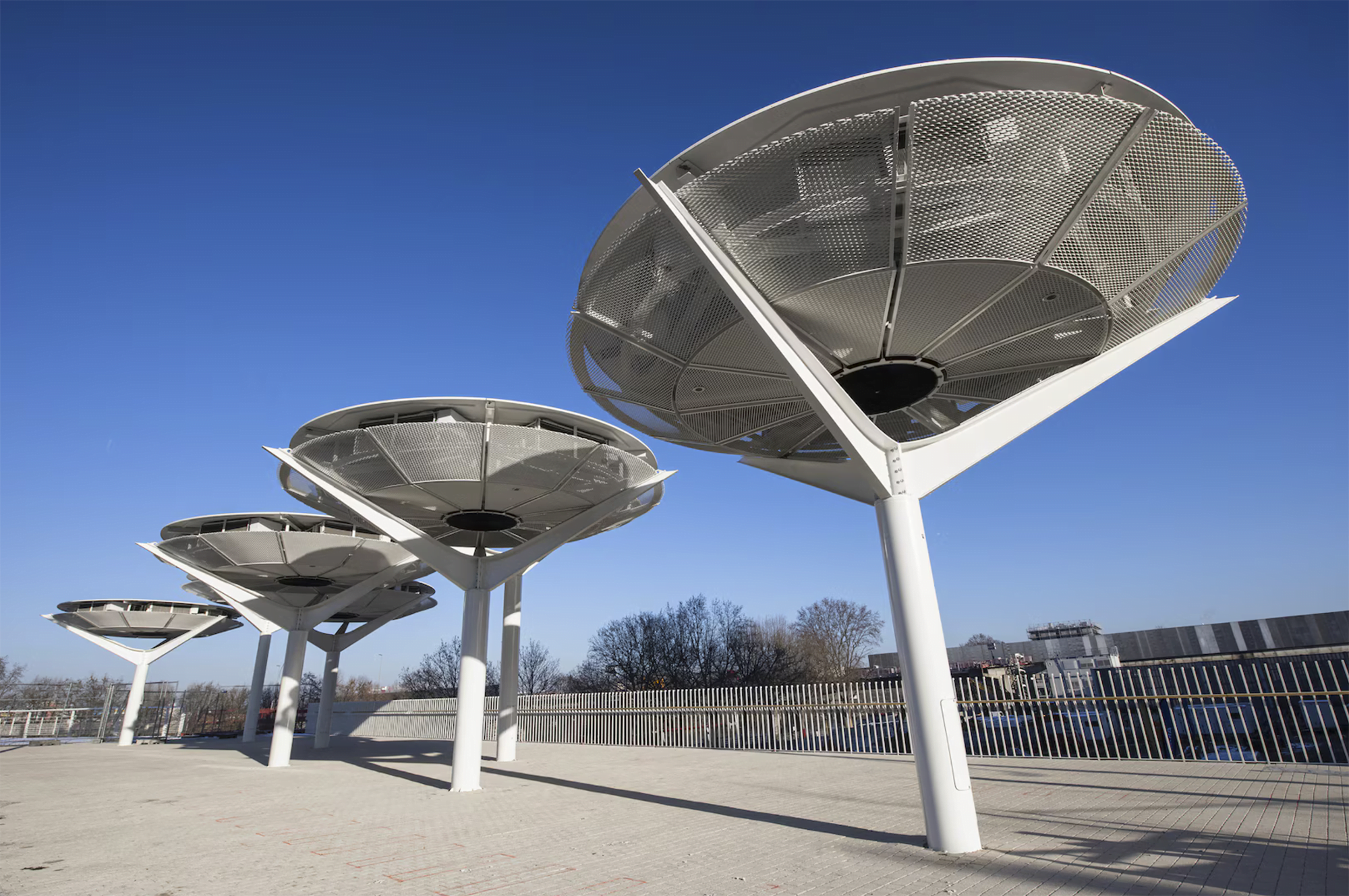In “Dispersion,” particles spread under the influence of an unseen fluid. Like Roman de Giuli’s work, filmmaker Susi Sie creates macro images that look like ice floes, deserts, and river deltas viewed from above. This similarity of patterns at both large and small scales is a specialty of fluid physics. Just as artists use it to mimic larger flows, scientists use it to study planet-scale problems in the lab. (Video and image credit: S. Sie et al.)
Tag: particulates

Paris 2024: Clearing the Air
A quartet of mushroom-shaped structures tower nearly 6 meters above the Olympic Village. Known as Aerophiltres, these devices filter particulates out of the air to provide cleaner air for the Village, despite its proximity to major roadways. There’s no need to change out the filters in the Aerophiltres, though, because they don’t have any. Instead, the devices ionize fine particles, encourage them to clump together, and then capture them on highly-charged metal plates. A fan near the base sucks polluted air in through the top and expels clean air at the ground level. According to the engineers, the system is capable of removing 95% of particulates and producing nine Olympic-sized swimming pools’ worth of clean air each hour. Compared to traditional systems — which require lots of power to suck air through filters that get progressively more clogged — the Aerophiltres are energy efficient, highly effective, and easy to maintain. (Image credit: SOLIDEO/C. Badet; via DirectIndustry)
Related topics: How manta rays filter without clogging, making artificial snow, and building whitewater rafting courses
Catch our past and ongoing Olympic coverage here.
The Inside of an Evaporating Drop
[original media no longer available]
Evaporating droplets may not look like much to the naked eye, but they contain complicated flow patterns. The type of pattern observed depends strongly on the contact line, the place where the liquid, solid, and air meet. When the contact line is pinned–kept unchanged–during evaporation, any particulates in the drop get pulled toward the edges as the drop evaporates. This is what leaves the classic coffee ring stain. It is also what is shown in the first clip in the video above. Contrast this with the second clip, in which the contact line is unpinned and varies irregularly as the drop evaporates. In the unpinned drop, particles are drawn inward during evaporation. The flow patterns are very different as well, complicated by swirling that is the result of force imbalances caused by the irregularly receding contact line. (Video credit: H. Kim)

Airborne Aerosols
This numerical simulation from NASA Goddard shows the motion of particulates in Earth’s atmosphere between August 2006 and April 2007. These aerosols come from various sources including smoke, soot, dust, and sea salt. As these fine particles move through atmosphere, they can have significant effects on weather as well as climate. For example, the particles serve as nucleation sites for the condensation and formation of rain drops. (Video credit: NASA Goddard SFC)


